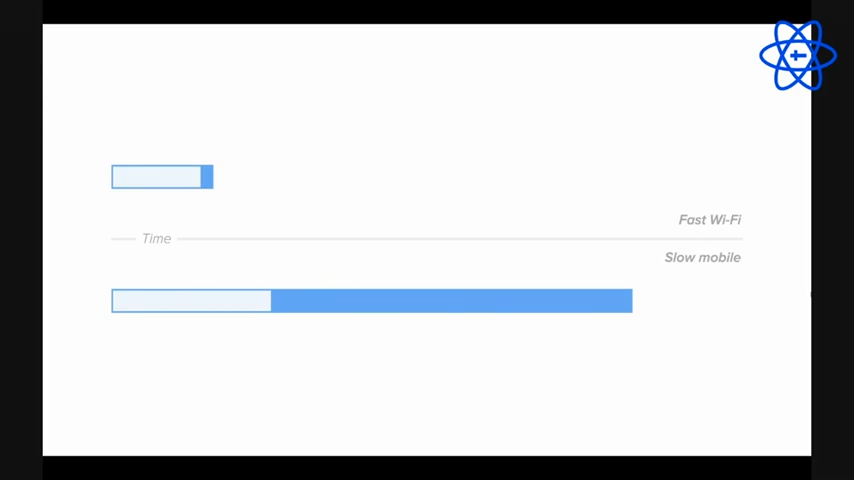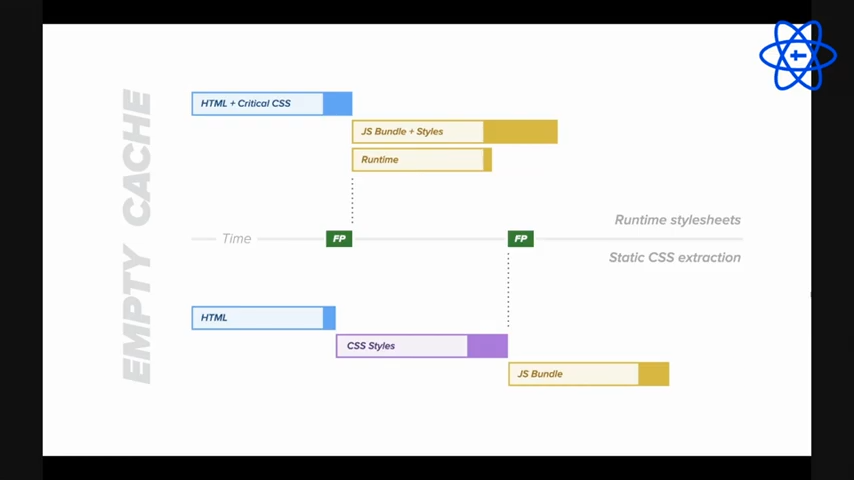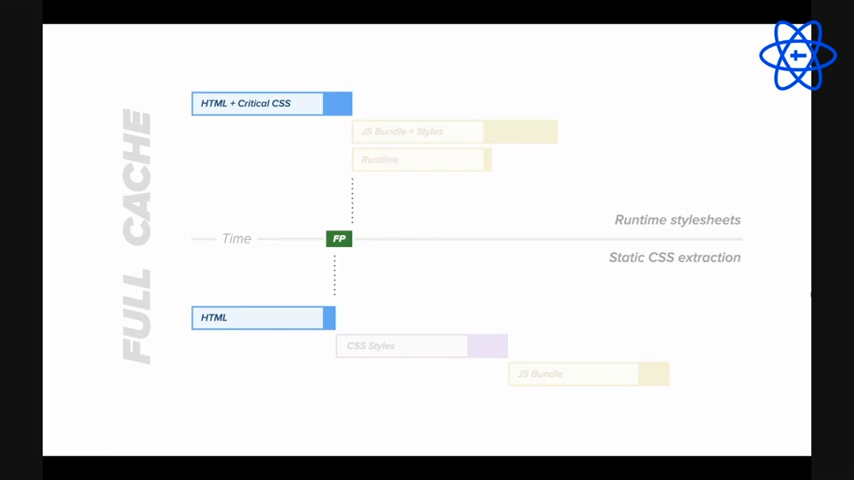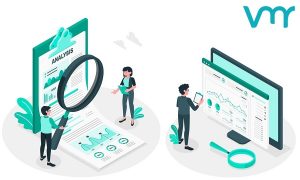Month: October 2021

MMS • Bruno Couriol
Article originally posted on InfoQ. Visit InfoQ
Andrei Pfeiffer recently presented the results of a comparative study of 11 CSS-in-JS libraries. In his talk at React Finland 2021, Pfeiffer focused on the distinction between static and runtime CSS-in-JS libraries and further explained how each category and browser caching relate to performance.
Pfeiffer explained the motivation behind the two-month-long study as follows:
The reason why I made this analysis: I wanted to explore a type-safe way to write CSS. I use TypeScript in most of my application code so to write business logic and components. I get all the benefits of type safety for the rest of the code but the CSS part and the styling part are not natively type-safe. I was particularly looking for libraries that support server-side rendering and may easily integrate with Next.js with of course full TypeScript support.
After reviewing over 50 CSS-in-JS libraries, the study focused on 11 CSS-in-JS libraries that met the study criteria. In his talk at React Finland 2021, Pfeiffer focused on one specific aspect of the comparison that impacts the perceived application performance. That aspect relates to whether the library outputs static CSS files; or chooses instead to update styles at runtime — by injecting CSS rules in a document or updating DOM elements’ style.
While the full study compares the CSS-in-JS libraries across 16 criteria, Pfeiffer explained the importance of the dichotomy static/runtime CSS-in-JS as follows:
Understanding how these features affect Core Web Vitals and Performance Metrics [performance KPIs tracked by Google and which may impact search ranking results] in general is an extremely important factor to consider, and the way styles are delivered to the client has probably the biggest impact.
The Static CSS category includes CSS Modules, Linaria, and vanilla-extract (successor of Treat, launched this year). The Runtime CSS category includes Styled JSX (maintained by Vercel, creator of Next.js), Styled Components, Emotion, TypeStyle, Fela, Stitches (maintained by Modulz and launched last year), JSS (a very mature solution published in 2014), Goober, Compiled (maintained by Atlassian, released last year).
Pfeiffer delineated in the talk that the comparative performance profile of static CSS-in-JS libraries depends at least on two important factors: the speed of the network the user device is connected to, and the contents of the browser cache.
Download times will exhibit little variance between user devices on fast Wi-Fi connections. The following slide (extracted from Pfeiffer’s talk) shows that, conversely, devices on a slow connection will be impacted to a larger degree of magnitude by the size of files to download:

Pfeiffer argued that when the browser cache is empty, static CSS-in-JS libraries like Linaria will have in general a higher First Paint (FP) performance metric. First Paint is the time between navigation and when the browser renders the first pixels to the screen, rendering anything that is visually different from what was on the screen prior to navigation. Lower FPs correlate positively with better user experience.

Conversely, on subsequent downloads, when the browser cache already has the files necessary to display the expected application screen, static CSS-in-JS library may lead to a lower FP, that is, may result in a better user experience:

Pfeiffer’s study compares 11 CSS-in-JS libraries across 16 criteria that cover both user experience (e.g., page size delta, static CSS extraction, theming), developer experience (e.g., TypeScript support, IDE support, CSS-like DSLs), and component support (e.g., scoped CSS, atomic CSS, inline customization of components’ style). The full study and its detailed comparisons and conclusions can be accessed on GitHub.
StyleX, facebook.com’s CSS-in-JS library, also presented at React Finland 2021, falls in the static CSS-in-JS category. Some of the libraries under study are framework-agnostic. Others complement front-end UI frameworks that leverage HTML-in-JS, for instance via JSX.
Developers are invited to refer to the full talk presented at React Finland 2021. The talk contained additional technical explanations and illustrations that further cover the topic of the talk. React Finland 2021 took place online between the 30th of August and the 3rd of September.

MMS • RSS
Article originally posted on Data Science Central. Visit Data Science Central
Machine Learning and the Search for E.T.
- Exoplanet Detection using ML has risen exponentially in the last decade.
- CNNs are identifying more Earth-like planets.
- If we do find extraterrestrial life, it will be with the help of AI.
If there is life beyond Earth, it’s going to be found on an exoplanet—planets orbiting stars other than our own sun. The number of exoplanets is thought to number in the trillions [1], but despite an abundance of data from exoplanet-finding missions like Kepler, K2, and TESS, just a few thousand potential exoplanets have been confirmed. The biggest problem is a glut of information; About 30 GB is being collected every day from NASA’s Transiting Exoplanet Survey Satellite (TESS) mission [2], which launched in 2018. This gives astronomers an overwhelming amount of data to analyze. The sheer number of candidate stars, which stretches into the millions, confounds the problem and results in too many candidate exoplanets to manage without the assistance of ML.
In addition to information overload, another obstacle is how exoplanets are identified. The aim of the TESS missions was to find exoplanets by monitoring brightness changes in nearby stars. However, brightness changes are not easy to categorize; Light from stars is between 10 million and 10 billion times brighter compared to orbiting dim planets [3], making their identification a major challenge for astronomers. Another issue is the challenge of false positives. As a star rotates, stellar activity like starspots and granules on the star’s surface create the same “wobbles” as those created from orbiting rocky planets. This phenomenon creates many false positives when classified by human hands [4].
The solution to all these problems is machine learning, which can automate the task of exoplanet detection. ML has kept pace with advances in astronomy—with improved algorithms, accessibility for non-experts, and availability of enormous computational power through cloud computing and virtualization. This creates an ideal environment to team the two disciplines.
Machine Learning Makes an Entry
Various ML methods to automate exoplanet detection have emerged in the last few years. Autovetter, first developed by McCauliff and colleagues in 2015 [5], was the first attempt to use ML for identification of exoplanets. Autovetter uses a random forest combined with manually labeled examples to learn and classify candidate events into three categories:
- Planet candidate (PC),
- Astrophysical false positive (AFP), such as a non-transiting binary star.
- Non-transiting phenomenon (NTP), such as instrument noise.
Shallue and Vanderburg [6] used a deep convolutional neural network (CNN) classifier named Astronet, which is open source and available on github [7], to increase the speed and sensitivity of exoplanet searches. The CNN was trained to classify signals from Kepler or TESS as exoplanets or false positives.
The above figure, from Shallue and Vanderburg’s study, is a visualization of the 2D geometric space in which their CNN embeds its input light curves. True planet candidates are colored blue and false positives are colored red. Astronet continues to develop; In 2019, two new “super-Earths” were found by AstroNet-K2 using NASA’s Kepler space telescope [8]. A scaled-down, more precise CNN model was created in 2021 with 8x fewer trainable parameters than Astronet [10]. The hope is that these scaled-down versions may be able to be implemented on resource-constrained environments.
Many other studies have applied ML to the problem of finding exoplanets with varying success. Chaushev & Raynard [9] applied CNNs to data from the Next Generation Transit Survey (NGTS). This ground-based robotic search for exoplanets, located in the Atacama desert in northern Chile, has identified several new exoplanets.
What’s Next?
The search for life begins with finding exoplanets, then narrowing the field to those planets in the “habitable zone,” which is, in short, where you would find liquid water. From there, spacecraft could be sent to analyze atmospheres, perhaps picking up signs of an earth-like atmosphere– a mix of oxygen, carbon dioxide, and methane would be a strong indication of possible life. Transit spectroscopy, where light from exoplanets is split and analyzed, could also provide information on gases and chemicals on those planets, including those connected to the possibility of life. [11] As this involves an incredible amount of classification and search data, if we do find life, it will be with the assistance of AI.
But there’s also another possibility: AI could help us look for alien intelligence in ways we haven’t even thought of yet. “I hope it’s there,” said NASA astronomer Shawn Domagal-Goldman. “I want it to be there. I’ll be planning a party if we find it.” [1]
References
[1] Life in The Universe What Are The Odds
[2] The Search for Life: Exoplanet Detection with Deep Learning
[4] A Survey of Stellar Activity
[5] Automatic Classification Of Kepler Planetary Transit Candidates
[6] Identifying Exoplanets With Deep Learning
[7] Github Astronet
[10] The Search for Life: Exoplanet Detection with Deep Learning
[11] https://exoplanets.nasa.gov/search-for-life/can-we-find-life/

MMS • Sergio De Simone
Article originally posted on InfoQ. Visit InfoQ

A few months after its announcement as an alpha version, JetBrains Compose Multiplatform has reached beta, which includes many improvements and stabilizes its APIs as a step towards the 1.0 release.
Inspired by Google Jetpack Compose declarative UI framework, Compose Multiplatform aims to extend its approach to multiple platforms. It includes Compose for Desktop and Compose for Web and leverages Kotlin Multiplatform to support a number of different platforms. In particular, Compose Desktop uses Google’s Skia library to draw UI widgets on Windows, macOS, and Linux. This provides a unified experience across all supported OSes at the expense of each platform native look and feel.
Given its strict relationship with Kotlin and Jetpack Compose, the main appeal of Compose Multiplatform seems to be with Android developers who might need to support the Web and the Desktop in addition to mobile.
One important change in JetBrains beta is it now refers directly to Google Compose artifacts on the Android platform instead of publishing its own versions. This prevents conflicts such as class duplication and improves compatibility.
Most improvements to Compose Multiplatform beta belongs to its desktop version, including improved rendering to extend hardware compatibility, a new mouse pointer API, and accessibility support on macOS.
The software renderer is now used as a fallback renderer in case of issues with the graphics hardware available on the target system. For example, if the rendering system encounters issues with DirectX, it can revert to using OpenGL, and if that also fails, to the software renderer. JetBrains has also improved the performance of the software renderer and added support for non-rectangular views.
The new mouse pointer API has been extended with new events that enable hoverables. This means you can now access the hover state of a composable in a portable way.
Accessibility support for macOS brings the possibility of using VoiceOver for low-vision and blind users and is the first step to make Compose Multiplatform accessible on all OSes, including Windows.
As a last note about new features in the beta, the Web target of Compose Multiplaform now supports SVG graphics. This makes it possible to define and embed vector images into apps using the @Composable API.
To prepare for the 1.0 release, JetBrains has annotated all the APIs that have not received enough feedback or could foreseeably change as experimental. All the APIs that are not experimental may be considered mostly stable, says JetBrains.
At the moment, it is not clear yet if and when JetBrains will support iOS as a target for Compose Multiplatform. It is worth mentioning, though, an independent project aimed to bring Jetpack Compose to the iOS platform, which is still in the experimental stage. In spite of its name being Multiplatform-Compose, it should be not confused with JetBrains Compose Multiplatofrm.
To start with Compose Multiplatform, you can refer to JetBrains tutorials for the desktop and the Web. Another useful reference is the official example app showcase.

MMS • RSS
Posted on mongodb google news. Visit mongodb google news

By Contributor,
Today
Techday’s 10 Minute IT Jams provide sharp, to-the-point insights into emerging and established technology companies that operate in the Asia-Pacific region.
Today we talk to MongoDB solutions architecture manager for A/NZ Guillaume Meister.
MongoDB is a general purpose database platform, designed to unleash the power of software and data for developers and the applications they build. Headquartered in New York, MongoDB has more than 29,000 customers in over 100 countries.
In this interview, Guillaume discusses the company’s products and services, the challenges it solves, how its offerings can boost productivity, and more.
Watch the video below.
Article originally posted on mongodb google news. Visit mongodb google news
Of Spinoza’s ethics and AI ethics: Why you should create an AI ethics framework for your own organization from first principles

MMS • RSS
Article originally posted on Data Science Central. Visit Data Science Central
Spinoza’s ethics was the first attempt to apply Euclidean thinking to philosophy to create a system of ethics from first principles.
Could we apply the same first principles thinking to formulating AI ethics?
Last week, I spoke at an online event for legal professionals about AI Ethics. AI ethics is a very important topic but it is also a subject like Privacy i.e. there is a lot of heat but little light. By that I mean, everyone has a view on AI ethics but there are very few pragmatic approaches on AI ethics.
So, I was trying to present a set of pragmatic ideas for AI ethics.
I proposed that every organization should create its own AI ethics framework from first principles because
- Many AI ethics approaches are academic – these sound great in theory but are hard to implement
- Many companies internally take the opposite approach try to define ethics only on the problems they currently have but could ignore ethics problems that may arise downstream
- There are AI ethics approaches from countries and large vendors but they cannot be applied as-is
Hence, the suggestion that every company could create its own AI ethics by adapting an existing framework to their needs and undertaking a first-principles approach for their organization
Firstly, you could start with a general ethics framework for example by the Alan Turing Institute which provide the principles and priorities for a legal framework
- Human dignity
- Human freedom & autonomy
- Prevention of harm
- Non-discrimination, gender equality, fairness & diversity
- Data protection and the right to privacy
- Accountability and responsibility
- Democracy
- Rule of law
This represents a top-down approach
Now, the HBR document How to create an AI ethics framework suggests a bottom-up approach based on the following steps
- Identify existing infrastructure that a data and AI ethics program can leverage.
- Create a data and AI ethical risk framework that is tailored to your industry
- Change how you think about ethics by taking cues from the successes in health care.
- Optimize guidance and tools for product managers.
- Build organizational awareness.
- Formally and informally incentivize employees to play a role in identifying AI ethical risks.
- Monitor impacts and engage stakeholders.
Hence, it may be not so difficult to create an AI ethics framework tailored to your organization from first principles by taking both a top-down and bottom-up approach – much like Spinoza.
Image source: wikipedia

MMS • RSS
Posted on nosqlgooglealerts. Visit nosqlgooglealerts

New Jersey, United States,- The NoSQL Database Market report provides a basic overview of the industry including definitions and classifications. The market analysis is provided for the international markets including development trends, competitive landscape analysis, and key regions development status. The study gives an intricate examination of its applications including a detailed cost evaluation analysis of products that are available in the worldwide market with regards to existing manufacturer profit margins. It helps figure out the primary driving forces of the market in significant end-use organizations around the world. It likewise constitutes a broad investigation of the restraints on the market, business sector structure, and the business pattern of the NoSQL Database market. Meetings and interviews with the leading market participants have been used in order to present primary information regarding the market.
Get | Download Sample Copy with TOC, Graphs & List of Figures @ https://www.verifiedmarketresearch.com/download-sample/?rid=129411
The report covers extensive analysis of the key market players in the market, along with their business overview, expansion plans, and strategies. The key players studied in the report include:
Objectivity Inc, Neo Technology Inc, MongoDB Inc, MarkLogic Corporation, Google LLC, Couchbase Inc, Microsoft Corporation, DataStax Inc, Amazon Web Services Inc & Aerospike Inc.
Trusted current state analysis tools, such as Porter’s five forces analysis and SWOT analysis are employed in the report to assess the NoSQL Database market data to deploy a complete overview of the market. Furthermore, this report gives a complete review of the magnitude and application scope of the market around the world. A detailed overview of the purchasing criteria and difficulties confronted in the NoSQL Database business sector is also elaborated in this report.
NoSQL Database Market Segmentation
NoSQL Database Market, By Type
• Graph Database
• Column Based Store
• Document Database
• Key-Value Store
NoSQL Database Market, By Application
• Web Apps
• Data Analytics
• Mobile Apps
• Metadata Store
• Cache Memory
• Others
NoSQL Database Market, By Industry Vertical
• Retail
• Gaming
• IT
• Others
Get Discount On The Purchase Of This Report @ https://www.verifiedmarketresearch.com/ask-for-discount/?rid=129411
NoSQL Database Market Report Scope
| ATTRIBUT | DETAILS |
|---|---|
| ESTIMATED YEAR | 2021 |
| BASE YEAR | 2020 |
| FORECAST YEAR | 2028 |
| HISTORICAL YEAR | 2019 |
| UNIT | Value (USD Million/Billion) |
| SEGMENTS COVERED | Types, Applications, End-Users, and more. |
| REPORT COVERAGE | Revenue Forecast, Company Ranking, Competitive Landscape, Growth Factors, and Trends |
| BY REGION | North America, Europe, Asia Pacific, Latin America, Middle East and Africa |
| CUSTOMIZATION SCOPE | Free report customization (equivalent up to 4 analysts working days) with purchase. Addition or alteration to country, regional & segment scope. |
Geographic Segment Covered in the Report:
The NoSQL Database report provides information about the market area, which is further subdivided into sub-regions and countries/regions. In addition to the market share in each country and sub-region, this chapter of this report also contains information on profit opportunities. This chapter of the report mentions the market share and growth rate of each region, country and sub-region during the estimated period.
• North America (USA and Canada)
• Europe (UK, Germany, France and the rest of Europe)
• Asia Pacific (China, Japan, India, and the rest of the Asia Pacific region)
• Latin America (Brazil, Mexico, and the rest of Latin America)
• Middle East and Africa (GCC and rest of the Middle East and Africa)
Key questions answered in the report:
• What is the growth potential of the NoSQL Database market?
• Which product segment will take the lion’s share?
• Which regional market will emerge as a pioneer in the years to come?
• Which application segment will experience strong growth?
• What growth opportunities might arise in the NoSQL Database industry in the years to come?
• What are the most significant challenges that the NoSQL Database market could face in the future?
• Who are the leading companies on the NoSQL Database market?
• What are the main trends that are positively impacting the growth of the market?
• What growth strategies are the players considering to stay in the NoSQL Database market?
For More Information or Query or Customization Before Buying, Visit @ https://www.verifiedmarketresearch.com/product/nosql-database-market/
Visualize NoSQL Database Market using Verified Market Intelligence:-
Verified Market Intelligence is our BI-enabled platform for narrative storytelling of this market. VMI offers in-depth forecasted trends and accurate Insights on over 20,000+ emerging & niche markets, helping you make critical revenue-impacting decisions for a brilliant future.
VMI provides a holistic overview and global competitive landscape with respect to Region, Country, and Segment, and Key players of your market. Present your Market Report & findings with an inbuilt presentation feature saving over 70% of your time and resources for Investor, Sales & Marketing, R&D, and Product Development pitches. VMI enables data delivery In Excel and Interactive PDF formats with over 15+ Key Market Indicators for your market.
Visualize NoSQL Database Market using VMI @ https://www.verifiedmarketresearch.com/vmintelligence/
About Us: Verified Market Research®
Verified Market Research® is a leading Global Research and Consulting firm that has been providing advanced analytical research solutions, custom consulting and in-depth data analysis for 10+ years to individuals and companies alike that are looking for accurate, reliable and up to date research data and technical consulting. We offer insights into strategic and growth analyses, Data necessary to achieve corporate goals and help make critical revenue decisions.
Our research studies help our clients make superior data-driven decisions, understand market forecast, capitalize on future opportunities and optimize efficiency by working as their partner to deliver accurate and valuable information. The industries we cover span over a large spectrum including Technology, Chemicals, Manufacturing, Energy, Food and Beverages, Automotive, Robotics, Packaging, Construction, Mining & Gas. Etc.
We, at Verified Market Research, assist in understanding holistic market indicating factors and most current and future market trends. Our analysts, with their high expertise in data gathering and governance, utilize industry techniques to collate and examine data at all stages. They are trained to combine modern data collection techniques, superior research methodology, subject expertise and years of collective experience to produce informative and accurate research.
Having serviced over 5000+ clients, we have provided reliable market research services to more than 100 Global Fortune 500 companies such as Amazon, Dell, IBM, Shell, Exxon Mobil, General Electric, Siemens, Microsoft, Sony and Hitachi. We have co-consulted with some of the world’s leading consulting firms like McKinsey & Company, Boston Consulting Group, Bain and Company for custom research and consulting projects for businesses worldwide.
Contact us:
Mr. Edwyne Fernandes
Verified Market Research®
US: +1 (650)-781-4080
UK: +44 (753)-715-0008
APAC: +61 (488)-85-9400
US Toll-Free: +1 (800)-782-1768
Email: [email protected]
Website:- https://www.verifiedmarketresearch.com/

MMS • RSS
Article originally posted on Data Science Central. Visit Data Science Central
High Density Region Estimator (HDRE)
HDRE Goals
1. Approximate any empirical distribution
2. Build a parameterized density estimator
3. Outlier detection and dataset noise reduction
My Approach
1. Particle SwarmGenetic Optimizer (KernelML)
2. Multi-Agent Approximation using IID Kernels
3. Discounted Reward Based Learning, (Reinforcement Learning?)
Here are a list of potential use cases in the form of a few questions and answers:
Question 1.
Has your client ever ask you to research, or “look into,” a single data point with respect to the output of a model?
Answer 1:
With HDRE you can get multivariate density estimate, cluster assignment, and similar data points all in one shot.
Question 2:
Do you need an outlier detection model that can be scaled to big-data for a low-latency production model?
Answer 2:
After training, the HDRE model can assign a matrix of data points to clusters in linear time.
Question 3:
Have you ever wondered what the density of a particular cross-section of data is across multiple dimensions?
Answer 3:
Its possible to plot the density distribution with respect to a cross section of dataselection of data points.
Question 4:
Do you have a lot of available cpu cores?
Answer 4:
The algorithm is automatically parallelized with numba! Though the training algorithm requires many iterations, the time complexity depends on the number of dimensions and not on the number of data points.
If you are interested in this algorithm, please DM on LinkedIn. The code is free to use and open-source. I would really like to try this algorithm out on various real-world use cases.
HDRE Github:
https://github.com/freedomtowin/high-density-region-estimator
Hierarchical Density Factorization:
Density Factorization:
https://www.datasciencecentral.com/profiles/blogs/high-density-region-estimation-with-kernelml
NoSQL Databases Software Market Overview, Cost Structure Analysis, Growth Opportunities …

MMS • RSS
Posted on nosqlgooglealerts. Visit nosqlgooglealerts

London, MR Accuracy Reports crafted the report, titled Global NoSQL Databases Software Industry 2021 is a methodical research study based on the NoSQL Databases Software market, analyzing the competitive framework of the industry in the world. Using efficient analytical tools such as SWOT analysis and Porter’s five forces analysis, the report provides a comprehensive assessment of the NoSQL Databases Software market. Our big research team were able to captured all-important chapters in the final report as they have been striving towards it.
We Have Recent Updates of NoSQL Databases Software Market in Sample [email protected] https://www.mraccuracyreports.com/report-sample/204170
TOP Players- ( There would be more players in the report)
MongoDB, Amazon, ArangoDB, Azure Cosmos DB, Couchbase, MarkLogic, RethinkDB, CouchDB, SQL-RD, OrientDB, RavenDB, Redis
The report covers each aspect of the market for NoSQL Databases Software in globally, starting from the basic information about the market and advancing to the various criteria on the basis of which the market is classified. The major applications of the NoSQL Databases Software market are also discussed in the report. Also focused on 18 important chapters which will be revealed I the final version.
Browse Full Report with Facts and Figures of NoSQL Databases Software Market Report at @ https://www.mraccuracyreports.com/reportdetails/reportview/204170
NoSQL Databases Software Market
Cloud Based, Web Based.
Application as below
Large Enterprises, SMEs
Regional Assessment and Segment Diversification.
– North America (U.S., Canada, Mexico)
– Europe (U.K., France, Germany, Spain, Italy, Central & Eastern Europe, CIS)
– Asia Pacific (China, Japan, South Korea, ASEAN, India, Rest of Asia Pacific)
– Latin America (Brazil, Rest of L.A.)
– Middle East and Africa (Turkey, GCC, Rest of Middle East)
The report studies the NoSQL Databases Software market by evaluating the market chain, prevalent policies, and regulations as well as the manufacturers, their manufacturing chain, cost structures, and contribution in the industry. The regional markets for the global NoSQL Databases Software market are examined by analyzing the pricing of products in the region compared to the profit generated. The production capacity, demand and supply, logistics, and the historical performance of the market in the given region is also evaluated in this market report.
Please click here today to buy full report @ https://www.mraccuracyreports.com/checkout/204170
The report determines the leading players in the global market. The company profiles of the major participants operating in the global NoSQL Databases Software market have been reviewed in this study. Major stakeholder and investment has been covered in the study.
NoSQL Market SWOT Analysis,Key Indicators,Forecast 2027 : IBM Corporation, Aerospike …

MMS • RSS
Posted on nosqlgooglealerts. Visit nosqlgooglealerts

Supported by comprehensive primary as well as secondary research, the report Global NoSQL Industry 2021 presents profitable market insights. This market research report has deployed suggestions from numerous industry experts and also presents valuable recommendations from expert and experienced market analysts. Key decision makers from this industry added their own thoughts from all around the world.
Some of the Major players are listed in the report and we will add more as per your requirements. (This report is customizable).
IBM Corporation, Aerospike Inc, MarkLogic Corporation, Hibernate, MariaDB, Oracle Database, Neo technology, MongoDB, Basho Technologies, Couchbase, PostgreSQL
We Have Recent Updates of NoSQL Market in Sample [email protected] https://www.mraccuracyreports.com/report-sample/211522
NoSQL Market
Key-Value Store, Document Databases, Column Based Stores, Graph Database.
Application as below
Retail, Online Game Development, IT, Social Network Development, Web Applications Management, Others
MRA Reports has discovered the report which incorporates restraints, market drivers, opportunities, challenges, investment potential, future roadmap, new innovations, vendor profiles, market trends, and strategies. The report also details market size forecasts for the global NoSQL market. Additionally, further forecasts have been presented pertaining to the dominant segments of the NoSQL market. The report is deployed along with numerous graphs, charts, and graphics for a better and vivid understanding of the market data.
Browse Full Report with Facts and Figures of NoSQL Market Report at @ https://www.mraccuracyreports.com/reportdetails/reportview/211522
To add on the report answers some key questions, which are as follows:
What are the drivers impacting the market growth of the NoSQL market?
What will be the estimated NoSQL market size and the CAGR at which the market will expand, by the end of the forecast horizon?
Which geographical segments (regions) as well as sub-areas will expand at the most elevated rate during the forecast horizon?
What are the primary strategies adopted by the emerging organizations in the NoSQL market?
How will the market dynamics be shaped by the end of the forecasting horizon?
A detailed evaluation of the leading vendors in the NoSQL market is delivered and a description of how these top companies are focusing at the emerging markets around the world is conferred through this report. In addition to this, recent strategic mergers, partnerships, collaborations, and acquisitions taking place in the global NoSQL market have been incorporated in this report.
Please click here today to buy full report @ https://www.mraccuracyreports.com/checkout/211522
A section demonstrating the key recommendations for established players and new entrants is also exhibited in this study. Strategic recommendations from senior analysts provide a clear perspective with regard to the key strategies to be adopted to get the most benefit from entering the NoSQL market. MR Accuracy Reports has focused on client’s requirements. There has been huge demand to add some certain chapters so successfully experts have added.

MMS • RSS
Posted on mongodb google news. Visit mongodb google news

MongoDB Inc. (NASDAQ:MDB)’s traded shares stood at 0.5 million during the last session, with the company’s beta value hitting 0.63. At the close of trading, the stock’s price was $521.29, to imply an increase of 3.30% or $16.67 in intraday trading. The MDB share’s 52-week high remains $525.00, putting it -0.71% down since that peak but still an impressive 57.89% since price per share fell to its 52-week low of $219.51. The company has a valuation of $34.81B, with an average of 0.52 million shares in intraday trading volume over the past 10 days and average of 806.40K shares over the past 3 months.
Analysts have given a consensus recommendation of an Overweight for MongoDB Inc. (MDB), translating to a mean rating of 1.90. Of 18 analyst(s) looking at the stock, 1 analyst(s) give MDB a Sell rating. 0 of those analysts rate the stock as Overweight while 5 advise Hold as 12 recommend it as a Buy. 0 analyst(s) have given it an Underweight rating. Estimates put the company’s current-quarter earnings per share at -$0.37.
3 Tiny Stocks Primed to Explode The world’s greatest investor — Warren Buffett — has a simple formula for making big money in the markets. He buys up valuable assets when they are very cheap. For stock market investors that means buying up cheap small cap stocks like these with huge upside potential.
We’ve set up an alert service to help smart investors take full advantage of the small cap stocks primed for big returns.
Click here for full details and to join for free
Sponsored
After registering a 3.30% upside in the last session, MongoDB Inc. (MDB) has traded red over the past five days. The stock hit a weekly high of 525.00 this Friday, 10/29/21, jumping 3.30% in its intraday price action. The 5-day price performance for the stock is 3.25%, and 10.56% over 30 days. With these gigs, the year-to-date price performance is 45.19%. Short interest in MongoDB Inc. (NASDAQ:MDB) saw shorts transact 5.0 million shares and set a 4.16 days time to cover.
Analysts on Wall Street suggest a consensus price target of $489.15, implying a decrease of -6.57% to the stock’s current value. The extremes give us $410.00 and $590.00 for target low and target high price respectively. As such, MDB has been trading -13.18% off suggested target high and 21.35% from its likely low.
MongoDB Inc. (MDB) estimates and forecasts
Revenue is forecast to shrink -19.40% this quarter before falling -3.00% for the next one. The rating firms project that company’s revenue will grow 37.70% compared to the previous financial year.
Revenue forecast for the current quarter as set by 13 analysts is $205.14 million. Meanwhile, for the quarter ending Jan 2022, a total of 13 analyst(s) estimate revenue growth to $227.8 million.
MDB Dividends
MongoDB Inc. has its next earnings report out between December 06 and December 10. However, it is important to take into account that this dividend yield ratio is just an indicator to only serve the purpose of guidance. Investors interested to invest in the stock should ponder company’s other fundamental and operations related aspects too. MongoDB Inc. has a forward dividend ratio of 0, with the share yield ticking at 0.00% to continue the rising pattern observed over the past year. The company’s average dividend yield trailing the past 5-year period is 0.00%.
MongoDB Inc. (NASDAQ:MDB)’s Major holders
MongoDB Inc. insiders hold 5.87% of total outstanding shares, with institutional holders owning 90.40% of the shares at 96.04% float percentage. In total, 90.40% institutions holds shares in the company, led by Capital World Investors. As of Jun 29, 2021, the company held over 7.65 million shares (or 11.56% of shares), all amounting to roughly $2.77 billion.
The next major institution holding the largest number of shares is Price (T.Rowe) Associates Inc with 5.77 million shares, or about 8.71% of shares outstanding. As of the market price on Jun 29, 2021, these shares were worth $2.08 billion.
>> 7 Top Picks for the Post-Pandemic Economy
We also have Growth Fund Of America Inc and Smallcap World Fund as the top two Mutual Funds with the largest holdings of the MongoDB Inc. (MDB) shares. Going by data provided on Sep 29, 2021, Growth Fund Of America Inc holds roughly 4.81 million shares. This is just over 7.26% of the total shares, with a market valuation of $2.27 billion. Data from the same date shows that the other fund manager holds a little less at 2.65 million, or 4.00% of the shares, all valued at about 957.5 million.
Article originally posted on mongodb google news. Visit mongodb google news

